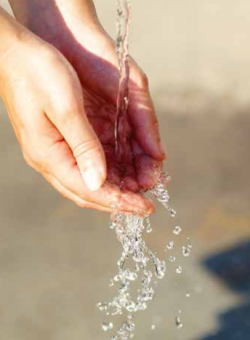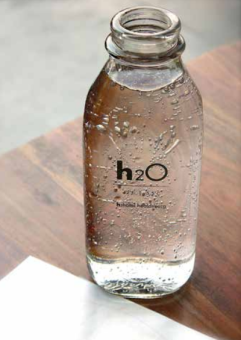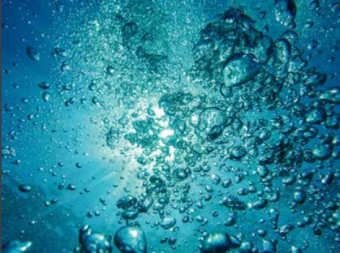
There is increasingly less drinking water on our planet, and serious global conflicts over drinking water are looming on the horizon, as the global crisis is already widely present due to the increasingly difficult provision of the basic needs of the human community, primarily the population living in the planet’s southern hemisphere. The uneven distribution of water resources (unevenness of water flows per unit of time) determines the availability of fresh water, which is one of the most significant limiting factors in development worldwide.
Due to insufficient reliability in providing the required annual quantities of drinking water for its population, this is a dominant item in strategic planning in the most developed countries. According to statistical data, Europe, for instance, has only 8 per cent of the world’s renewable freshwater resources, and at the same time, participates with 15 per cent of the total world consumption. The availability of quality water varies significantly within the same region, and in addition to natural factors such as geographical location, relief, precipitation and air temperature, the quality of water resources is also influenced by various anthropogenic factors.
According to the data collated by the Serbian Hydrometeorological Service (RHMZ), climatic influences in Serbia imply a constant and slight increase in air temperature in the last 40 years (according to statistical data starting in 1983), as well as the trend of decreasing precipitation in summer and increasing precipitation in winter months. We can conclude that these are not the exclusive, nor the dominant factors jeopardizing the supply of water resources in this region.
IN FOCUS:
- PERFECT TIMING AND THE RIGHT PARTNER FOR BUILDING A SOLAR POWER PLANT
- ENVIRONMENTAL PROBLEMS CAN ONLY BE SOLVED THROUGH A JOINT EFFORT
- SIEMENS — CREATING AN ENVIRONMENT THAT CARES
Waste of anthropogenic origin is the biggest problem causing the pollution of both surface and underground watercourses. In contrast to European countries, where 40 to 90 per cent of the generated waste is regulated, starting from separation, through reuse and treatment, to the full implementation of the circular economy principles, in Serbia, only 8 to 10 per cent of the generated waste is regulated. These most often include sanitary landfills, but without adequate segregation and regulation of leachate, with a very small per centage of reuse, recycling and creation of competitive market products.

Also, in addition to the discharge of municipal water into surface watercourses without prior treatment, the key sources of pollution are untreated industrial wastewater from various industrial plants, mine water, agricultural waste drainage water, and pollution created by thermal power plants and river navigation. Serbia needs to protect the space and catchment underground water areas, as well as existing and planned accumulations of surface water. The goals of the EU directives that are valid until 2030, then until 2040 and 2050, are also partly ultimatums for Serbia.
Wastewater treatment enables the preservation of freshwater sources and increases the capacity for their use. The implementation of the circular economy principles in the processing of wastewater from water supply systems should result in the reuse concept, which becomes the realized value of wastewater because it transforms the expensive wastewater treatment service into a self-sustaining service that generates economic importance.
Conventional water supply systems in Serbia process water mainly from surface watercourses by intaking water from a specific reservoir, through PH value correction (alternatively), purification, filtration using sand filters and mandatory chlorination. In the Belgrade water system, river and well water are purified in a somewhat more contemporary way via ozonation, UV disinfection, filters with activated carbon and using tuff in the treatment of river water, while the purification of well water begins with aeration.

What is common to all drinking water processing plants is maintenance, the so-called washing of filter installations with clean processed water. During the process, a certain amount of wastewater is created, used for its own consumption. Own consumption, depending on the degree of filter dirtiness, amounts to 4–17 per cent of the total produced water at the given plant. This means that, for instance, a plant that produces 1500l/s, i.e. about 4,000,000m³ per month and about 48,000,000m³ per year, can use up to 7,000,000m³ of clean water annually for its own consumption.
The public enterprise Belgrade Waterworks and Sewerage washes its filters one by one (two or more filters cannot be washed at the same time) in the following way — after purging it with air, the filter is washed with water at a flow intensity of 570l/s, between 20 and 25 minutes, until the turbidity value reaches 0.1NTU, where 700 to 900m³ of clean water is consumed per filter.
As the filter washing water goes directly into the sewage system, a turbidity/NTU test was performed by an accredited laboratory during the washing of filter installations which determined that after 4 minutes, the microbiological tests, it was concluded that only 15 per cent of the filter washing water has elevated parameter values compared to the recipient’s raw water, while 85 per cent of the wastewater is within the parameters of the recipient’s water (if, for example, 700m³ of washing water was used which means that 595m³ does not differ in quality from the incoming water at the intake).
Opinion MARINA STRIŽAK JANJUŠEVIĆ
Read the story in the new issue of the Energy portal Magazine Waste Management.

